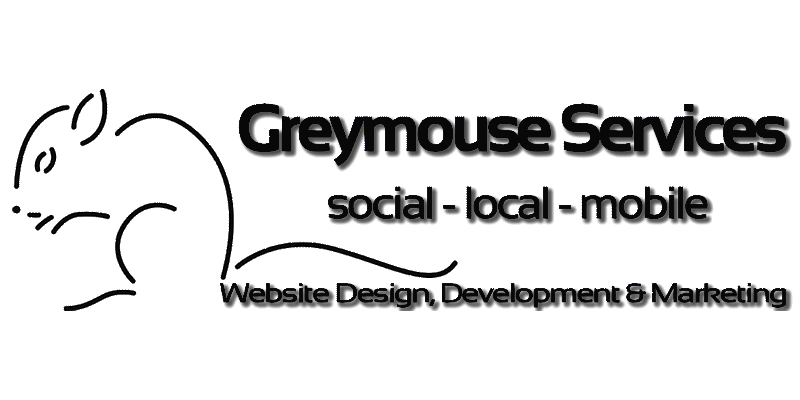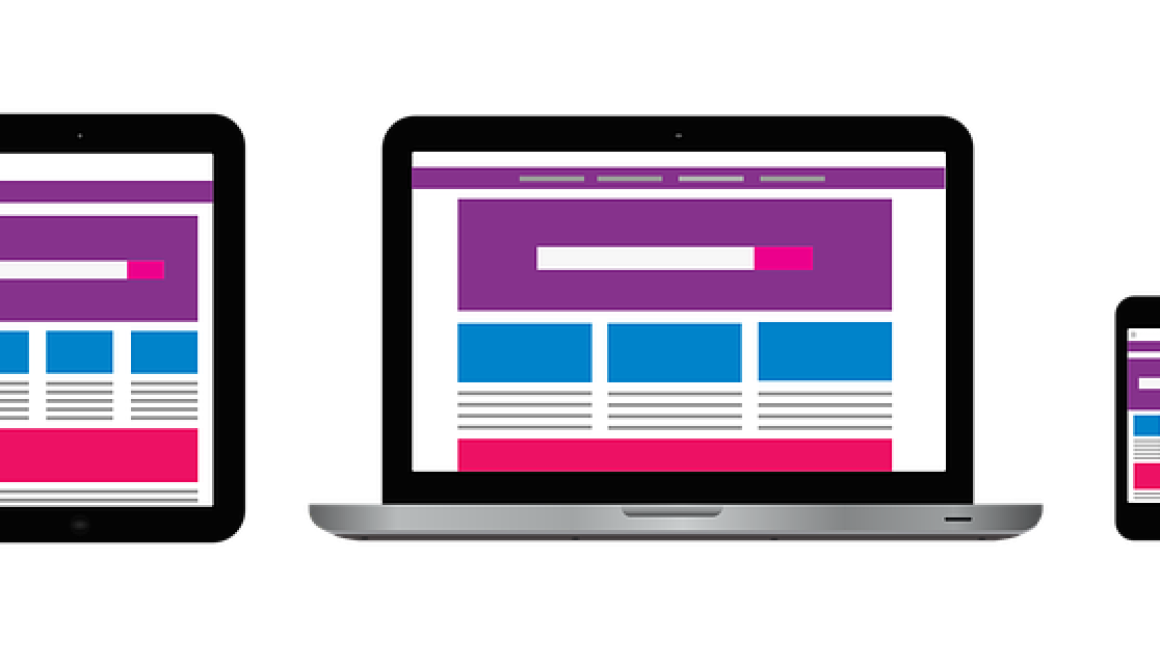This post from ProBlogger.com gave me some great tips on where to put the emphasis on my work with social media marketing…
Social Media Trends – Where Should You Focus Your Energy
In our last episode, I covered seven trends in social media and blogging. In today’s episode, I want to discuss where you should focus your energy as a blogger.

There’s so much we could do.but what should we do?
Don’t become overwhelmed and perplexed. Instead, be inspired about where to put your effort. Should you focus on:
live video? bots and messenger marketing? Facebook advertising? long-form video? Instagram stories? blog? all of the above?
And how do you decide?
Unfortunately (or perhaps fortunately) there’s no right answer. The ‘best spot’ will be different for everyone. Just don’t be pressured into doing what everyone else is doing.
Consider your style, topic, audience, and objectives and goals. Get in touch with who you are and what makes you shine.
Focus on conversions.
Don’t give up something that’s already working just to start something new. Nine times out of ten it won’t be any better. Instead, focus on good SEO practices.
Stay in control, and focus on building your own platform and assets rather than building on other people’s. Use your own to host a podcast or blog.
Save some time and effort for new ways to build your audience, brand, and engagement. Be cautious, but also be willing to pivot and diversify.
And don’t feel as if you have to do it all. Focus on being great at just one or two trends.
What are you going to try?
Links and Resources for Trends in Social Media – Where Should You Focus Your Energy?: Periscope Gary Vaynerchuk Darren Rowse on Twitter Darren Rowse in Instagram Further Listening 7 Social Media Trends I Noticed at Social Media Marketing World Courses Starting a Blog ProBlogger Pro – 31 Days to Build a Better Blog
Join our Facebook group
Full Transcript Expand to view full transcript Compress to smaller transcript view
Hi there and welcome to Episode 241 of the ProBlogger podcast. My name is Darren Rowse and I’m the blogger behind problogger.com, a blog, podcast, event, job board, series of ebooks, and the courses all designed to help you as a blogger to grow your audience, to create great content, to build engagement around your blog, and ultimately to build profit around your blog. I should say profit can be money but it can be other outcomes as well. However you define it, we hope to help you along that journey. You can learn more about ProBlogger at problogger.com.
Today’s podcast is brought to you by our brand new course, 31 Days to Build a Better Blog which is launching around now. We’ve already opened it up to a small group of beta testers. I think there’s actually about a hundred bloggers so far who have signed up and are working through that course. It’s closed off at the moment but if you are interested in joining that beta testing group, please go to problogger.com/31days.
It’s a course designed to help you over a month to give you a burst of love, bring a burst of love to your blog, to give some really intentional love and care to your blog to write some new content, to think about your editorial strategy, to think about how you can build engagement with your blog, to do some things to help you to get some new readers, and to begin to think about monetization. We don’t focus a lot on monetization in this course, it’s more about getting the foundations right that will help you to monetize but we touch on it towards the end.
You can learn more about it at problogger.com/31days. We will be opening it up for a wider audience in the coming weeks. If you don’t get it on that beta test, you just signup there. We’ll let you know when it does open up.
In today’s episode, I wanna talk about working out where to put your energy. This is really a follow up to the last episode, in 240. Back in that last episode, I identified seven trends in social media and blogging that I noticed at Social Media Marketing World this year in San Diego. If you haven’t listened to that episode yet, it might be worth doing so. In it I talked about Facebook, all the changes that have been happening with Facebook. I talked about Facebook live, bots, Messenger marketing, video content, Instagram stories, a lot of these newer trends that have been going on and that I’m now beginning to see people really go all in on.
If you listened to that episode, you’ll know that I finished off by asking the question where should we be going all in as bloggers? There’s so much we could do, there’s so much out there that we could be focusing our energy on but how do we work out what we should put our focus upon? That’s what today’s episode is all about. I really wanna help you to begin to wrestle with where should you be putting your effort? Should you be putting your effort into somebody’s new things or should you be putting your effort into some older things, some other things as well? You can find today’s show notes at problogger.com/podcast/241.
Where should we be going all in as bloggers? After Social Media Marketing World this year, I spoke to a number of attendees who are feeling simultaneously inspired by the teaching that they’d heard but also overwhelmed and perplexed by where they should be putting their effort in. I had one conversation, within about 30 seconds they asked me, “Should I go all in with live video? Should I be going in with bots and Messenger marketing? Should I be going in with Facebook advertising? Should I be doing a long-form video? Should I be doing Instagram stories or should I be doing it all?”
I posted some further questions, should you actually be focusing more upon your blog at the moment? Maybe you need to get into podcasting, maybe you should do long-form content, maybe you should be posting daily or weekly. The decisions that we need to make as bloggers go on and on. I’ve asked all of these questions at the Social Media Marketing World as well. There were certainly some really big trends being talked about at the conference this year but the reality is we just can’t do all of those things unless we’ve got a massive team.
I do know some people who’ve got big teams and they are going all in on all of these things that I’ve mentioned. If you’re like me and you’ve got a small team or maybe your team is you, you’re gonna have to make some decisions about where you can go all in. The question is how do you make that decision? I wanna give you today, I think it’s five main points to help you make that decision. I hope that somewhere in the midst of these will be a few threads of, I guess, conversations that you might wanna pick up on and a few things that will resonate with you.
The first thing I wanna say is that there is no right answer here, there’s no one thing that we should all be focusing most of our efforts on. Obviously, we’re all in very different situations, we’re in different stages of our blog, we’re writing about different topics, we have different audiences, we’ve got different styles and personalities. The best spot for each of us will be very different.
I guess I wanna start with that because I don’t want you to feel that just because everyone else seems to be doing live video, or everyone else seems to be experimenting with Messenger bots, or everyone else is doing anything at the moment, you don’t need to feel that pressure. I wanna take that pressure off you.
I can relate to that feeling that everyone seems to be doing certain things, I look around at many of the bloggers in my space and they all seem to be building these amazing live video studios and spending tens of thousands of dollars on their studios. I felt that pressure, I feel like, “Maybe I need to buy a studio, maybe I need to spend all that money.” I don’t know if that’s right for me right now. Don’t feel that pressure, I wanna say that right up front. It’s probably better for you just to choose one thing to do really well than try to do it all.
You will look around it and it does seem that everyone else is doing everything, they’re not. Everyone is making strategic choices about these as well. I guess I wanna start with that. Don’t feel the pressure that you have to do it all, don’t feel the pressure that you have to do any one thing either. It really does need to come down to what’s going on for you at the moment, what can you do that’s gonna suit your situation.
The other thing I’ll say in this first point is it’s probably better to just choose one thing to do really well than to try and do everything okay. You probably wanna just go all in on one thing and become known in your industry, the person who does that one thing brilliantly better than anyone else, than trying to do four or five different things okay because you’ll never gonna become known as anyone doing anything exceptional if you’re doing everything okay. Be the person who’s doing that one thing brilliantly and your audience will notice and other people will notice as well. Take the pressure off yourself, think about who you are and what is gonna suit your situation best.
That’s the first thing that I wanna say which leads me to my next point. When you’re making that decision and considering your situation, what do you need to think through? I wanna suggest a few things to help you to think that through. Firstly, think about your style. For example, some of you are really good on camera. You think on your feet, you present well, you’re very clear, you do one take the content and maybe that is gonna give you a bit of a hint about what you should be doing. Maybe you should be doing live video if you’re great on camera and you think on your feet and you’re fast paced, that is probably a good format for you. Your style is going to help you.
Some of you are much better if you are able to plan and really think through your content and design your content. If that’s the case, maybe something that’s not live is gonna be better for you. I actually like live video, I like presenting but I do a lot of work before my live videos, particularly from presenting on a topic. I actually find that I’m probably better in this format that we’re talking now, something that I can record ahead of time and edit it and shape the content in some way, maybe a little bit more of a slow-paced thinker, that’s certainly me.
Maybe live video is not as good for you, maybe more episodic video which I talked about in the last episode, it might be better for you. Maybe Instagram stories is better for you because you’re able to plan those things out ahead of time than at live. Maybe you’re a bit more of a geeky person and you like designing systems and strategies and that type of thing. Maybe that is a hint to you that maybe something like bots might be worth playing with. It’s something that is a little bit geekier, it’s more about designing a system and thinking strategically about how to engage with people.
I guess what I’m trying to say here is try and be in touch with who you are and your style. As you think about the different options, what makes you light up? What makes you excited as you look at them and what puts you off? If you hear the word live video and you freak out and you start sweating, maybe that’s a signal that maybe it’s not right for you. It could also be just for you getting in the way of you doing the thing that is right for you, you wanna test these things out. Even as you test them, pay attention to the energy levels that you get as well.
Your style is part of it, your topic is another thing to consider and the topic that you create, content on shooting, form your choices. For example on my photography blog, the obvious choice here is to focus more upon mediums that celebrate the visual, I’m talking about photography. Bots might not be as useful as Instagram stories in that case. Instagram story is very visual, you can use video, you can use still images. You can probably weave those things in using a bot as well but I think in terms of topic, anything visual is gonna lend itself well to the topic that I’m writing about. Your topic will be different. Maybe some of the different mediums in the options in front of you will help to relate better in that type of topic.
Another thing to consider is your audience, understanding who’s on the other side of your content needs to inform your choices about the type of content that you create. Some of your audiences are gonna be very suspicious towards bots, for example. Maybe you’ve got an audience that really is suspicious to anything that’s gonna interrupt them in some ways. They’re not gonna respond well to bots.
Maybe your audience is like my audience in my photography blog and again they’re very visual, they’re more creative, more artistic. That might give you a hint as to the medium that you should use as well. I’m thinking about my photography blog, my audience, they’re more of a creative, they’re more into the aesthetics, they’re more artistic. Instagram stories might be something that we could experiment with there because it’s a more creative, playful medium. That will inform your choices as well.
The other thing to take into consideration as you’re thinking about your situation is where are you at the moment? What are your current goals and objectives and what stage are you at? This two can give you some hints as to what you should be focusing your time on.
If you are a brand new blogger, maybe you’ve just gone through a starter blog course, you’re in a different stage to someone who’s been blogging for ten years. Someone who’s been blogging for ten years probably already has an audience and their goal might be more around engagement, how do I engage and deepen the relationship with my audience?
Using a medium like live video might be really suitable particularly on Facebook live where you’ve probably already got a bit of an audience on Facebook. It’s about waking up that audience, engaging with them. Using something like live video might be really good if you’ve been around for a while. If you’re a first-month blogger, you probably don’t already have an audience on Facebook, Facebook live may not be the best strategy for you. Maybe some of the other networks might be a place where you can grow your audience a little bit more.
I know a number of people who’ve been growing their audience on Instagram, for example. They’ve been really learning about hashtags and doing a lot of outreach, commenting. They found that they would get more exposure on that platform. Back in the day when Periscope first started out, I remember a number of bloggers who really went all in on Periscope because it was a network at that time that was enabling them to find new audience member. By being new, maybe that will inform your decision as well.
What are your goals at the moment? Are your goals about building engagement? Are they about just building your audience? There’s a variety of different things that you might wanna focus on there. I guess what I’m trying to say here is one, there’s no right answer, two, really think about your situation, your style, your topic, your audience, and your current objectives and goals.
The third thing I wanna talk about is focusing upon what is already converting for you and for others. This might seem like a strange thing to say but over the years, I’ve seen so many people give up what’s already working for them because there’s something new there. People gravitate towards the new sexy thing even though they’ve already got something that’s already working for them. They’re giving up something that they’ve built and that could carry them into the future to focus upon something new.
New isn’t always better. In fact, I would say new is rarely better because many of the new things in our space don’t end up actually going anywhere at all. I can think back over the years to numerous times where I’ve come across people who have given up blogging to get into something new. I remember back when Twitter first came out, having a huge debate with one blogger in particular who’d spent several years building up a reasonably good following on their blog. They decided to give up that blog because this Twitter thing was coming and they went all in on Twitter. They gave up their blog to go all in on Twitter.
Similarly, I’ve seen people give up successful blogs to get onto Facebook, Instagram, Snapchat, YouTube, all of these channels. Ultimately, I’m not in a position to really say whether that was the right decision or not. None of those decisions were wrong, I don’t think blogging is the perfect fit for everyone. Maybe some of these people did do better things on these platforms. In numerous cases, as I think about these discussions I’ve had with people over the years, there’s been numerous times where I’ve heard in hindsight that person who made the switch wishes they didn’t because they realized they already had a good thing with their blog.
Perhaps, instead of giving up blogging to get into these things, maybe they should’ve done both or maybe they should’ve just stuck with blogging. Really think very carefully about your situation. This does tap in a little bit too what I was talking about earlier, it does depend upon the stage of your blog. If you’ve already been at blogging for a while, you’ve probably already got some things that are working for you. Maybe you should be putting more time into the things that are working a bit for you already to grow those things than getting to something new.
As I think about my situation and my business over the last few years, I can see that there are some things that worked for me that I need to bend down or I need to double down on these things rather than pick up something new. That’s the stage that I’m at but I think a lot of you out there would probably relate to this. As I look at my own business, the things that worked for me were blogging and podcasting. I’ve heard over the years blogging itself is dying, everyone keeps saying blogging is dead, blogging is dead.
But as I said in my last episode, blogging seems to be back at the moment. It is where most of my business really centers around, the blog and the podcast. Blogging is not dead; it is changed, it’s certainly not dead. It is so important in my business. If I was to track the sales of my product and the income from my products, almost every dollar that I make, actually there’s been a touch point with my blog beforehand. Yeah, I could get on the Facebook, yeah I could get onto Twitter, yeah I could do all the Instagram thing, I could do all of those other things and not blog at all but I suspect that that would really hurt my business in the long run.
Podcasting is another part of that. I don’t get as many people to listen to this podcast as read the blog, I get a lot more people touching the blog than the podcast but I know that my podcast listeners are so much more engaged than anyone else. I would suspect that anyone listening to this podcast is much more likely to do our brand new course, 31 Days to Build a Better Blog, or to come to one of our events.
You gotta think about what’s already working for you not just in terms of traffic but also engagements and some of these other things as well. Blogging and podcasting are a bit old fashioned, they’ve been around for years and years and years now. Their path is not as sexy and new as live video or Instagram stories or those types of things but you know what, they work. They work for me and they’ve been working for tens of thousands of other people as well. To be honest, the jury is still out on Instagram stories and some of these newer technologies. I would say, do consider that.
The other thing that works for me is search. The biggest source of traffic to my blog is Google, around 50% of my traffic comes from Google. Most full-time bloggers I know have similar splits in their traffic. I know there are exceptions to this, I know a few bloggers who get most of their traffic from Pinterest or most of their traffic from Facebook. In most cases, bloggers who make it full time actually get most of their traffic from search and yet how much time do we spend on search? How much time do we spend on Search Engine Optimization?
SEO is something that is well worth putting your energy into learning about and focusing your energy upon. It’s not something to obsess about but I actually think that a lot of people would do better to spend the time learning about SEO than they would about some of these other newer things.
Another thing that I’ll put in that category is email. By far the biggest source of sales for me is email. It doesn’t drive as much traffic for me as Google but I’d estimate around 90% of my sales come from email. That’s another area that if you aren’t doing at the moment, I would say that’s something that you need to pay attention to. It is working for most full-time bloggers that I know. It’s perhaps not as effective as it was five years ago, maybe it’s going to continue to decline but it’s certainly not something to ignore.
Blogging, search, email, these are all things that are gold for me. Perhaps they’re not as new, perhaps they’re not as sexy but I think these are things that we should be continuing to pay attention to.
Every time I go to a conference like Social Media Marketing World, I have this internal struggle within me. Yes, it’s exciting to explore on these new things but don’t give up on the things that are already working for our industry to go all in on these new things because in doing so maybe you’re actually ignore the things that have the potential to bring so much life to your business as well. What’s already working for you but also what is already working for our industry, don’t give up on those things to do the new thing.
I’ve talked about there’s no right answer, I’ve talked about thinking about your situation to decide what you should do, I’ve talked about focusing upon what is already converting for you and our industry.
Another thing that I really think is important here, this is my fourth point, is to focus upon what you have control over. This is the big one for me. Almost all of the new things that I heard being talked about at Social Media Marketing World this year give you very little actual control. In most cases, the things that invite us to give us our focus are things where we’re actually not building our own asset, we’re building other people’s assets. This is so important to hear.
Yes, Instagram stories are great but you don’t own Instagram. I’m sorry to say that but you don’t own that, you don’t own the connection that you have with your Instagram followers. Facebook live is great, it’s very powerful but you don’t own Facebook, you don’t own that connection that you have with your followers there. This is the reason I had that big fight with my friend who gave up blogging years ago to get onto Twitter, he gave up building his own asset to build Twitter’s asset. The same is true for all of these new things.
Going all in on Instagram stories or Facebook live or any of these things comes with risk. They can change the rules and the algorithms at any point. This is why we’re having this big Facebook armageddon at the moment. Twitter just changed the rules, you can’t tweet the same thing over and over again. And now, a lot of the tools like MeetEdgar are changing what they allow you to do. I had spent years building up my archive of tweets on MeetEdgar and then I logged in three days ago and they said, “You can’t retweet the same thing over and over again.”
Even though I wasn’t doing it more than once every six months, I can’t do that anymore. They changed the rules, Twitter changed the rules. I spent a lot of time building up a system that isn’t gonna work for me anymore now. They may not last the distance, we’ve seen social networks come and go over the years. They may change their technology and what they focus upon. Facebook, at the moment, is giving live video a bit of prominence, they’re giving groups prominence but that may not last. They may come up with something new and by you investing going all in on that technology can actually end up being a bit of a waste of time for you as well.
They may decide that you don’t belong on their platform anymore, maybe they changed their rules and they see you then breaking their rules because they changed the rules and maybe they kick you out. You don’t have control in these places, there’s risk associated with it. Consider that as you think about where you should be going all in on.
I think there’s a place to go into all of these new things. I’ll talk about that in a moment. I’m a big believer in putting most of your focus into building your asset, that’s why I keep coming back to have your own blog, have your own podcast, collect email addresses, have your own domain, have your own server, have your own platform. It’s so important to put most of your energy into that. As you consider all of these new things, keep in the back of your mind you’re building someone else’s asset.
My fifth and last point that I wanna make is a balance to that last one that I made. Put most of your effort into building your own asset but none of these that I’ve talked about means that you cannot get into the new stuff. You might be thinking Darren saying, “Don’t go do live, don’t do Instagram stories.” I actually think you should be doing some of it for some of your time.
I actually think the new stuff is important because it is going to help you to build your audience, it is going to help you to build engagement, it’s gonna help you to build your brand, it will help you to monetize your blog and it’s also gonna show your audience that you’re up to date as well, it’s gonna keep you current. All these things are important. It is going to help you to build your own asset but the key is to approach the new stuff with a bit of caution, don’t do it at the expense of building your own asset. That’s the first thing.
Experiment with the new stuff but don’t do it at the expense of building your own asset. Use the new stuff to leverage and to build your asset. Use Facebook live to get people over to your blog, use Facebook live to get people on your email list, use Facebook live to get people to your events, to buy your product. Use the new thing to build your asset.
The other thing I would say is to diversify your focus where you can. This is hard because you don’t wanna spread yourself too thin, I said this at the top of the show. Maybe it’s better to do one thing than all of the things. It is important where you do have the time to diversify your focus a little bit. Maybe spend 90% of your time building your blog and doing SEO and email and those things that you own. With your other 10%, maybe choose a couple of things to experiment with.
Another thing to keep in mind is to be ready to pivot. Opportunities like these new things don’t last forever. I said before that I came across a number of bloggers who built their brand and built their audience on Periscope when it first came out. Periscope was brilliant for getting exposure when it first came out. A lot of people are on it, they’re watching videos and enabled you to get yourself in front of new people. That wave of opportunity didn’t last forever.
Periscope is still around and I know a few people are still on it but most of the people who were riding that wave on Periscope today aren’t doing that anything because the opportunity isn’t there, they pivoted to something else. Most of them are now experimenting with Facebook live instead. They took their audience with them, they built that asset, they built that brand and now they pivoted. Be really ready to pivot in any of these new things.
One of the people I love who’ve been really riding the waves really well is Gary Vaynerchuk. I know Gary gets talked about a lot but he has jumped on so many emerging platforms over the years. He jumps on the new thing, he learns about it, he leverages it, he makes it work for him and then he moves on. He has adopted all of these new technologies, he’s worked at how they work, he’s leveraged them while they work and then he moves on to the next thing all the while building his own assets.
If you’ll look at what he’s doing at the moment, he’s engaging in all these places but he’s trying to get everyone across to what he calls first in line. He’s a messenger community. If you go and have a look at that, you’ll see that he grabs you emails address, he grabs your phone number, he is trying to build his own asset from all the platforms that he’s engaging on. I signed up for it the other day. Since I did, I’ve been getting emails from him, I’ve been getting text messages from him. He now owns the communication platform between me and him.
He doesn’t have to rely upon Facebook’s algorithm anymore, he’s got a direct contact point with me. I think this is really important. He’s leveraging the new things to build his asset, he is riding the waves while they last but then jumping onto the new thing. He’s diversifying what he’s doing as well.
That’s so important as you think about these new things, don’t put all your efforts into those. Continue to build that blog, continue to build that podcast, continue to build SEO and email. Do the things that are already converting for you. The time that you do spend in the new stuff, make sure you leverage it to build your asset, make sure you diversify where you have time to do that and make sure you’re ready to pivot. I think it’s so important to do that.
I hope somewhere in the midst of what I’ve talked about today is some advice that is helpful for you. I really hesitated to do my last episode, episode 240, sharing those trends, those seven trends that I noticed at the moment. I love that type of information but I also always hesitate to share it because I know it causes confusion and I know the temptation is to feel like you need to do it all. I really want you to take home that message that I started out with today. There is no right answer here, you don’t have to do it all.
Everyone else around you is making the same decisions. The people who seem to do best are the ones that are focusing on one or two of the things and don’t feel the pressure that they have to do it all. Really do consider your own situation to make this decision, focus upon what is already converting for you, don’t give up something that’s already working to be able to do the new thing. Focus upon where you have control and be ready in those new things to pivot along the way and to use them to build your asset.
That’s the advice that I wanna give you. I would love to hear your feedback. Where are you gonna put your attention at the moment? Are you gonna try something new? If so, what? I would love to hear that. Are you gonna double down on something that’s already working for you? Maybe you’ve already got some little glamour of things that are working that you’re gonna put even more energy into. I would love to hear your feedback on that. You can do so over in our Facebook group, just do a search for ProBlogger Community on Facebook. Let us know what you’re gonna double down on at the moment.
You can do that also in our show notes at problogger.com/podcast/241 where there are comments there. There’s also a full transcript of today’s show. You can reach out to me social, if you are on Twitter, I’m at @problogger or you can find me on Facebook and Instagram at @darrenrowse as well. I love to hear from you this week. Let me know what you’re doubling down on at the moment and how you came to that decision as well. If you got any question, I’m more than happy to tackle them as well. I look forward to chatting with you next week on the podcast in Episode 242.
If you’ve got a moment or two, I would love to get you to rate and review our show on whatever app you’re on. I get the emails every week. It’s my favorite part of the week, getting those emails from people from services that let me know when a new review has been left. I read them all and do appreciate them all. There have been some really nice ones over the last few days which have given me a lot of energy. Thank you for that. I’ll talk to you next week. Thanks.
You’ve been listening to ProBlogger. If you’d like to comment on any of today’s topics or subscribe to the series, find us at problogger.com/podcast. Tweet us at @problogger. Find us at facebook.com/problogger or search ProBlogger on iTunes.
This episode of the ProBlogger podcast was edited by the team at PodcastMotor who offer a great range of services including helping you to set up and launch your podcast as well as ongoing editing and production of the podcast that you produce. You can check them out at podcastmotor.com.
How did you go with today’s episode?
Enjoy this podcast? Sign up to our ProBloggerPLUS newsletter to get notified of all new tutorials and podcasts.
The post 241: Trends in Social Media – Where Should You Focus Your Energy? appeared first on ProBlogger.







 Related Stories240: 7 Social Media Trends I Noticed at Social Media Marketing World
Related Stories240: 7 Social Media Trends I Noticed at Social Media Marketing World
Read more here: feeds.feedblitz.com








